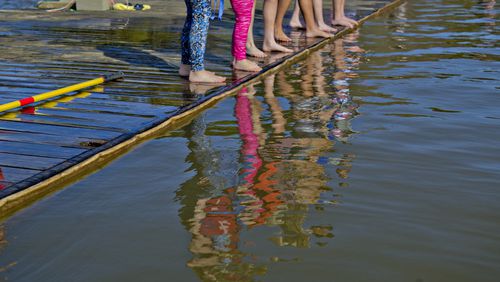With millions of recreational visitors each year, Lake Lanier is a top spot for Georgia’s landlocked residents to enjoy time on the water.
But with fun in the water comes underlying dangers. Deaths related to drowning and boating trouble the lake each year. In 2016 alone, Lake Lanier saw nine drownings and five boat-related deaths, according to statistics provided by the Department of Natural Resources.
To help keep your family safe this year, here are seven drowning prevention tips compiled from the US Army Corps of Engineers and DNR.
1. Keep an eye on kids.
Drowning can happen quickly and silently. It's easy to become distracted or assume that someone else has an eye on the kids. Even children who know how to swim need constant supervision when in the water.
2. Never swim alone.
Regardless of your swimming ability, dangerous circumstances can arise unexpectedly. Having someone else around to call for help can be the difference between life and death.
3. Know your limits.
Trying to push yourself or others to "keep up" can lead to cramps or fatigue. Encourage children to take swim breaks.
4. Not all areas are swim-friendly.
Only swim in Lake Lanier's designated swim zones.
5. Know where to dive.
It can be difficult to judge water depths or underwater hazards. Keep an eye out for signage to know whether diving is safe in your swimming area.
6. Water activities and alcohol don't mix.
Swimming (or boating) while intoxicated can lead to tragedy. According to the CDC, alcohol is involved in up to 70% of adolescent and adult water-related deaths.
7. You're never too cool to wear a life jacket.
They're not fashionable but they are life-saving. If boating, sailing or fishing, experts advise children and adults to wear a properly-fitting life jacket.
Recommended video: How dangerous is Lake Lanier?
About the Author






